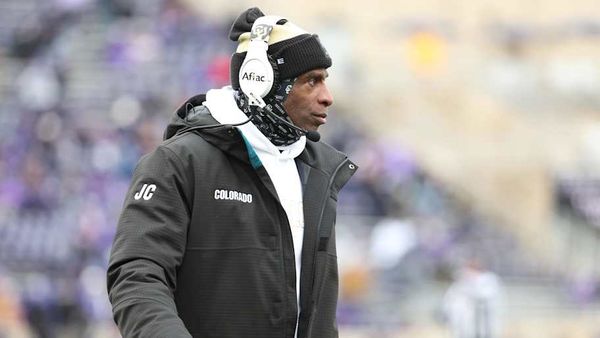It just doesn’t make sense,” says Italian prosecutor Giuliano Mignini (Francesco Acquaroli) during Disney+’s new eight-part drama, The Twisted Tale of Amanda Knox. This line could sum up the entire investigation into the tragic murder of 21-year-old British student Meredith Kercher – a crime steeped in such mystery and controversy that it still has the power to bewilder nearly 18 years on. Mired in inconsistent stories, inconclusive evidence, media bias and shoddy police procedure, the full events of 1 November 2007 seem unlikely ever to come to light.
The new show stars Grace Van Patten as Knox, Sharon Horgan as her mother Edda Mellas, and Giuseppe De Domenico as Knox’s former boyfriend Raffaele Sollecito, in a dramatised adaptation of Knox’s self-penned memoir, Waiting to Be Heard. Spanning events between 2007 and 2022, it covers the arrest, trial, conviction and eventual exoneration of Knox, then a 20-year-old American student on a year abroad in Italy, and Sollecito.
Unlike other true crime or real-life adaptations that are based on journalistic source material – Netflix’s Unbelievable or Apple Cider Vinegar, for example – the story here is very much told from Knox’s perspective. It means there’s a certain amount of subjectivity baked right in (though a lawsuit-swerving caveat in the credits states that, while the story is “inspired” by actual events, “certain characters, characterisations, incidents, locations and dialogue were fictionalised or imagined for purposes of dramatisation”).
First off, the rudimentary facts of the case for the uninitiated: on 2 November 2007, the body of Meredith Kercher was discovered in the Perugia flat that she shared with Knox and two Italian women in their late twenties. Kercher was a well-liked Leeds University student, just a couple of months into her year abroad. She was found with her throat cut; she had been stabbed 47 times.
The show follows Knox’s account of what happened on the evening of 1 November and the following day. According to Knox, she spent the night at the home of Sollecito, a 23-year-old Italian computer science student with whom she’d begun a whirlwind romance just eight days earlier. The next morning, Knox returned to her shared apartment alone. The front door was open, though no one seemed to be home; she took a shower, noticing a chip of blood on the sink and bloodstains on the bathmat, and saw an unflushed stool in the toilet. Mildly alarmed, she left the flat and rang Kercher’s phone, which went straight to voicemail.
Knox headed back to Sollecito’s and the pair later returned together, discovering signs of a break-in. The door to Kercher’s bedroom was locked; Sollecito called the Carabinieri – Italian state police – after unsuccessfully trying to break down the door. While the couple waited outside, a pair of officers arrived on separate business: two phones, both belonging to Kercher, had been found discarded in the garden of a local woman. Knox’s flatmate, Filomena Romanelli, arrived with friends and they forced the door of Kercher’s room. Her body was discovered inside.
Over the next few days, Knox was questioned multiple times by police – initially, she believed, as a key witness. Sollecito was also questioned, at one point suggesting that Knox might have left his flat on the evening of 1 November. During a lengthy interrogation, Knox ended up saying that Patrick Lumumba – the owner of local bar Le Chic, where Knox worked part time – might have committed the murder and that she may have been present in the house at the time. She retracted her statement not long afterwards, claiming it had been made while she was confused and exhausted.
On 6 November, Knox, Sollecito and Lumumba were arrested for Kercher’s murder. Lumumba was released two weeks later when several patrons of Le Chic corroborated his alibi.
Meanwhile, 20-year-old “drifter” Rudy Guede was implicated after his fingerprints, shoeprints and DNA were found at the crime scene and on Kercher’s body. He was vaguely known to the young women, having occasionally hung out in a group with them and the male students who resided in the downstairs flat. Guede was tracked down in Germany and arrested on 20 November. He opted to be tried in a closed, fast-track procedure in which he did not testify and was not questioned about his previous inconsistent statements. Guede was found guilty of the sexual assault and murder of Kercher and sentenced to 30 years’ imprisonment, of which he ultimately served 13 years.
In contrast, Knox and Sollecito’s trial was open to the press, and Knox was subject to a very public “trial by media” outside of the courtroom. She was a young, attractive woman, and the prosecution were determined to paint her as a sexual deviant – using, as evidence, the fact that Knox owned a vibrator. Given the nickname “Foxy Knoxy” in the tabloids and branded a femme fatale, Knox was accused by the prosecution of assaulting and killing Kercher, aided by Sollecito and Guede, as part of a dark, drug-fuelled sex game.
Police claimed that a knife found at Sollecito’s apartment that potentially could have been the murder weapon contained traces of Kercher’s DNA on the blade and Knox’s DNA on the handle. No DNA profiles pertaining to Knox were ever found in the murder room itself. They also found Sollecito’s DNA on a bra clasp that had been cut from Kercher’s body. Meanwhile, the defence found numerous serious flaws in the forensics and police procedure – the bra clasp, for example, wasn’t analysed until a full 46 days after the murder, by which point it had also moved across the floor of Kercher's bedroom.
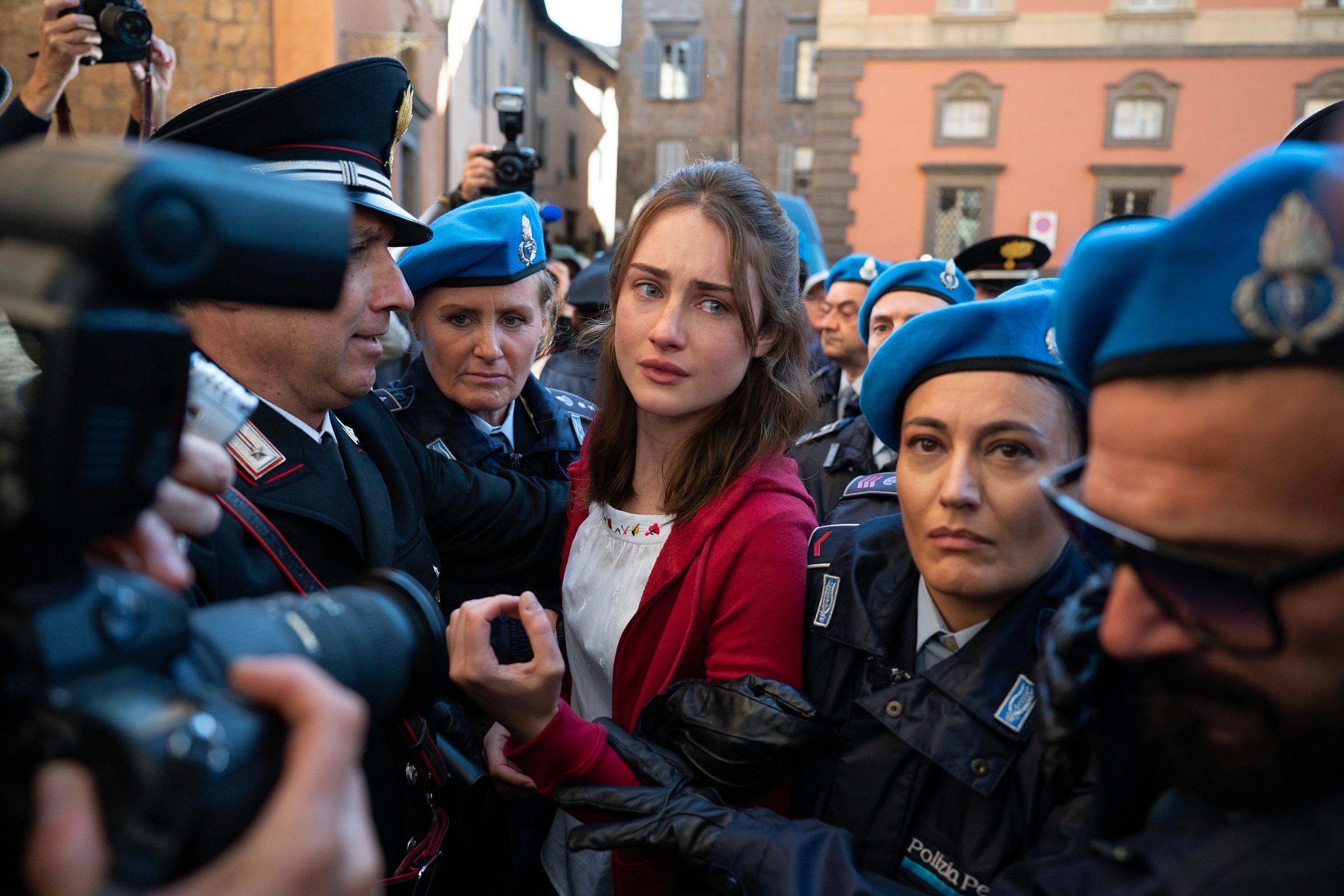
Sollecito and Knox maintained their innocence but were found guilty of Kercher’s murder and sentenced to 25 and 26 years imprisonment respectively in 2009. Both served four years before being acquitted on appeal and released in 2011. Less than three years later, the verdict was overturned by Italy’s highest court, and the pair were declared guilty once again – though they weren’t required to return to jail. The final appeal was mounted, and in 2015 Sollecito and Knox were conclusively exonerated and declared innocent by the supreme court, who cited “glaring errors” in the original investigation and trial.
In the meantime, Knox had moved back to Seattle, become involved in activism for the wrongfully accused and met her now-husband, Christopher Robinson, with whom she has two children.
So, what’s real and what’s “imagined” in the new show?
Are the characters real?
The majority of the named players in the dramatisation are based on real people who were all involved in the case, including the accused, the victim, their families and other witnesses.
In particular, Giuliano Mignini really was Knox and Sollecito’s prosecutor, while Don Saulo Scarabattoli, a prison chaplain played by Alfredo Pea, has been described by Knox as being her “best friend” over the four years she was incarcerated.
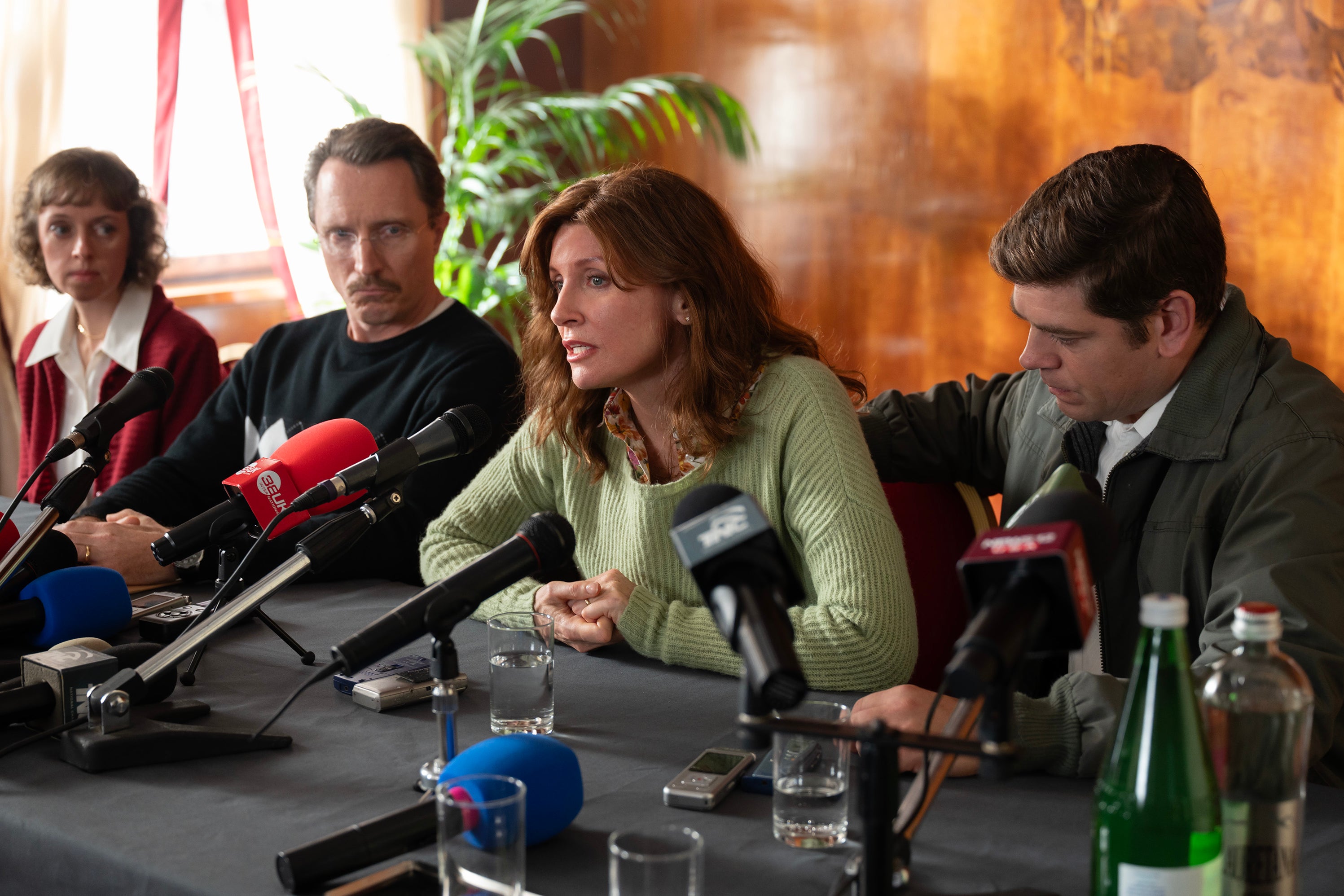
One of the leading Italian female officers depicted as being particularly hostile towards Knox, Monica Napoleone (played by Roberta Mattei), was also a genuine member of the Perugia Flying Squad who helped steer the investigation.
However, other members of the investigative team appear to be fabrications or composites. Knox’s interpreter in the show, Vittoria Noce (Greta Bendinelli), is not a real person; Lucrezia Ippolito (Evelyn Fama), the dramatisation’s fictional forensics tsar, takes the place of various forensics experts who worked on behalf of the prosecution.
Did they really say that?
Sort of. Much of the dialogue in the trial scenes – the questioning of Knox for her testimony, her spontaneous courtroom interjections, her emotional appeal speech etc – is almost verbatim, taken from court transcripts.
The infamous 2013 televised interview Knox did with American journalist Chris Cuomo after her release – in which he asks her if she’s into “freaky sexual things” – is also a near-word-for-word re-enactment.
However, plenty of exchanges will be more of a rough approximation based on memory, while others are clearly invention – scenes between police officers discussing the case when Knox wasn’t present, for example. There’s also liberal artistic licence taken in terms of what was said to Knox in Italian at a period when she had only a rough grasp of the language. Officers’ quick-fire questions, for example, or the words of a fictionalised creepy prison warden who says lewd, disgusting things to her.
Did Knox really do the splits in the police station?
Yes. Much was made of her “strange behaviour” in the aftermath of the murder, and several incidents that the prosecution used to paint Knox as an unfeeling, sex-obsessed “monster” are recreated in the show.
Knox and Sollecito’s infamous kiss outside the flat after Kercher’s body had been found is one such moment. And the pair really were admonished by officers when Knox was caught sitting on Sollecito’s lap at the police station.

There’s a slight deviation when it comes to Knox’s notorious bout of gymnastics. In the show, an officer asks her to show him some yoga moves and she demonstrates tree pose, downward dog and finishes off with the splits. In reality, chief superintendent Giacinto Profazio testified at the original trial: “In the police station, she turned a cartwheel and did the splits.”
Did Knox really falsely accuse Patrick Lumumba of murder?
Yes. After one long questioning session, during which Knox claimed to have been called a liar and hit on the back of the head by an officer, she broke down and said that her boss might have committed the murder. She later put this falsehood down to the police’s manipulative interrogation techniques. Hours later, Knox hand-wrote her own statement in English: “In regards to this ‘confession’ that I made last night, I want to make clear that I’m very doubtful of the veritity [sic] of my statements because they were made under the pressures of stress, shock and extreme exhaustion.”
Separate from the murder trial, Knox’s slander conviction of falsely implicating Lumumba was upheld by an Italian appeals court in 2024. She was sentenced to three years in prison, but this time had already been served in her original stint of incarceration.
Did Knox really get falsely told she had HIV?
Yes. According to diaries she kept at the time, a prison doctor mistakenly told Knox she had tested positive for HIV after getting a false positive result. A list she made of her previous sexual partners ended up being leaked to the press.
Were Knox and Sollecito’s phones really tapped?
Yes. Sollecito was the main target; every call and text made by his extended family was secretly monitored for six months following the murder, reported CBS News.
Did Knox really wear a T-shirt saying ‘All you need is love’?
Yes. Knox’s decision to wear a T-shirt emblazoned with the famous Beatles lyric during the original murder trial was headline news around the world.
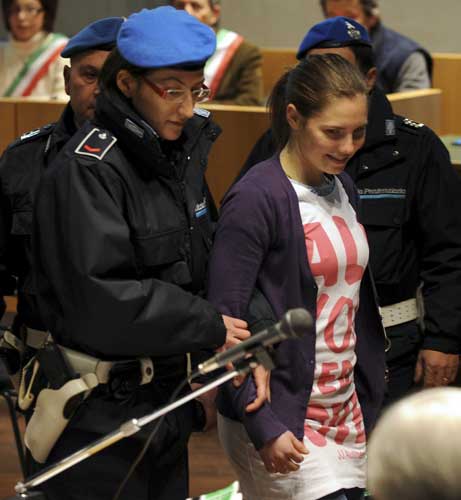
Many of the outfits depicted in the show are faithful recreations, including all of Knox’s trial ensembles and her and Robinson’s whacky wedding attire (they had a space-themed dress code).
Can Knox really speak Italian?
Yes. While she spoke only rudimentary Italian during the initial investigation, Knox became fluent during her four years in jail. According to friends and family, Knox would frequently slip back into Italian without realising when she first returned to the US.
Did Rudy Guede ever admit to killing Kercher?
No. Though Guede admitted to being at the house, he has maintained that his DNA was at the scene because he was trying to save Kercher’s life after someone else stabbed her while he was using the bathroom.
In a transcript of a Skype call between Guede and a friend while the former was still at large in Germany in 2007, Guede said: “I tried to help her, to staunch the wounds…”
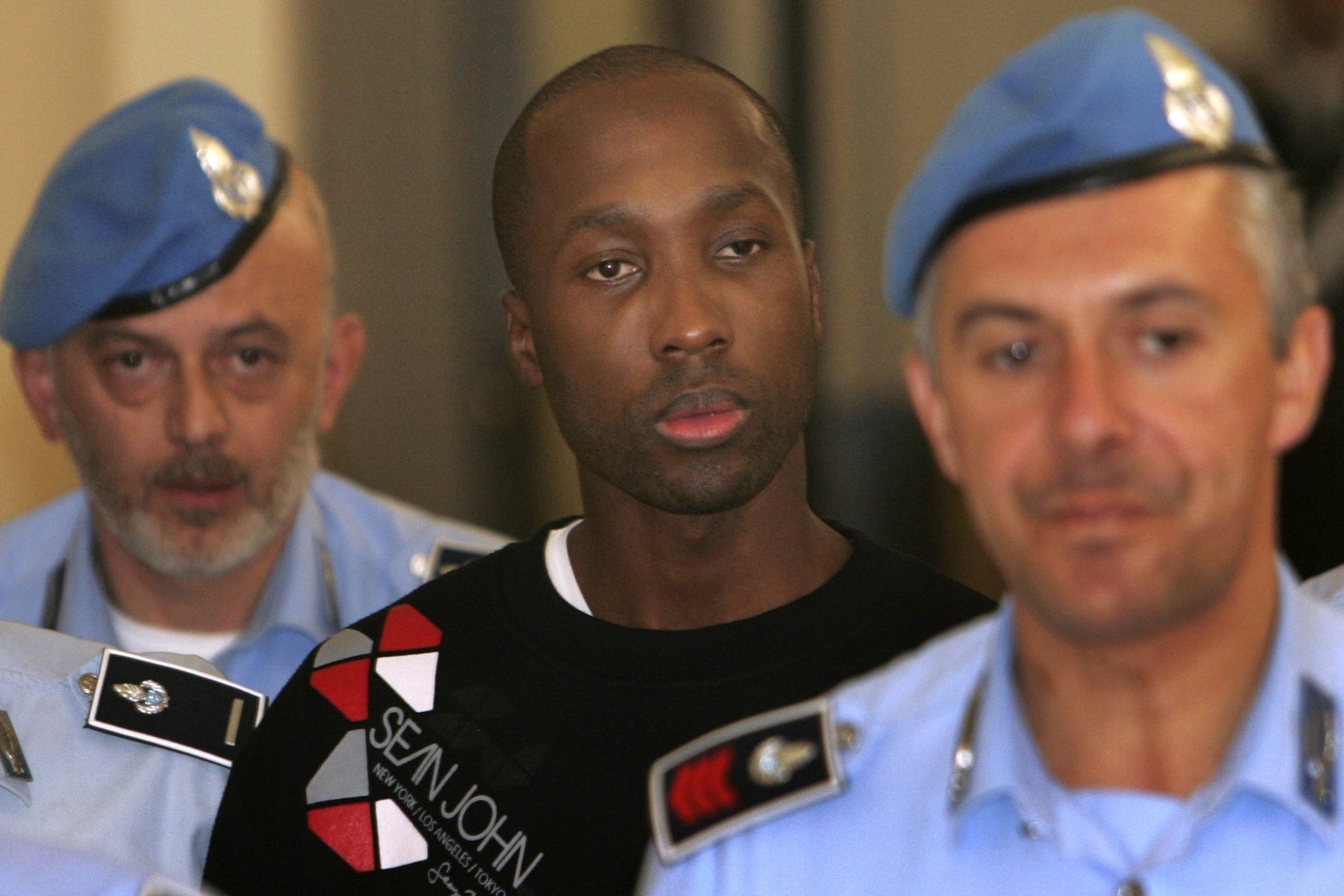
When Guede was released from prison in 2021, he gave a similar report, saying, “I’ve got blood on my hands because I tried to save her, not kill her,” and claiming that “the [legal] documents say others were there and that I did not inflict the fatal wounds.”
Did Knox really make friends with her prosecutor?
Sort of. Knox wrote to Giuliano Mignini, with her friend (and, coincidentally, Mignini’s childhood priest) Don Saulo Scarabattoli initially acting as go-between. They moved to exchanging WhatsApp messages, including swapping family pictures, before eventually meeting in person in Perugia in 2022.
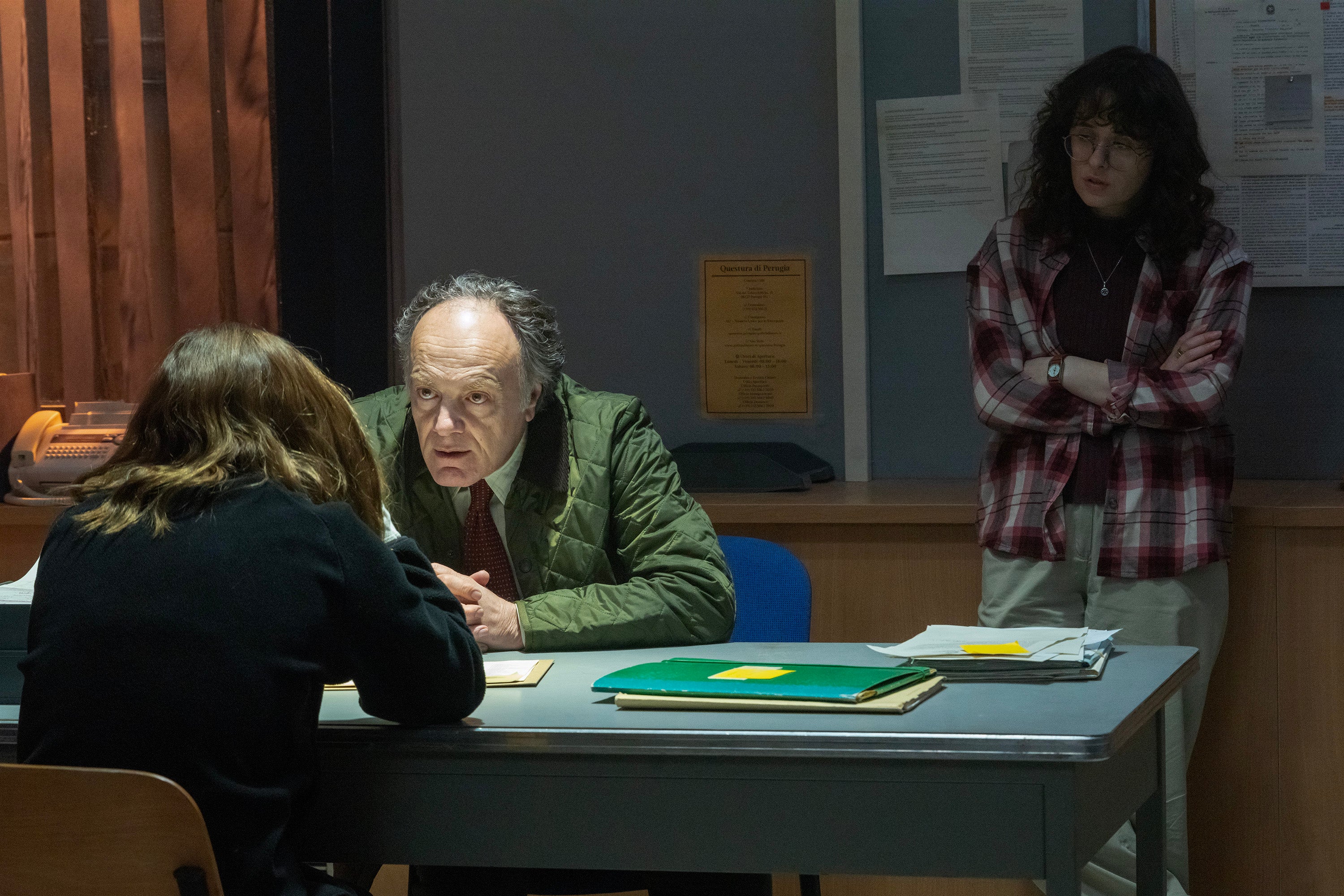
“Amanda has changed a lot and I think I can say that I know her,” Mignini told The Telegraph of their unlikely bond. “We have different ideas about the trial that involved us, but now I have a good opinion of her.”
Mignini has, however, publicly maintained that he still believes Knox was physically present on the night of the murder.
The Twisted Tale of Amanda Knox review – Unusually bubbly drama offers no closure
Princess Andre’s childhood trauma deserves more than this tacky reality show
Thomas Skinner’s casting on Strictly doesn’t feel right. What’s going on?
Harry and Meghan’s TV deal has been an almighty flop – Netflix is crazy to want more
How the Carrie Bradshaw we adored ended up betraying everything we loved about her
And Just Like That was a total disaster – and heartbreaking for Sex and the City fans


